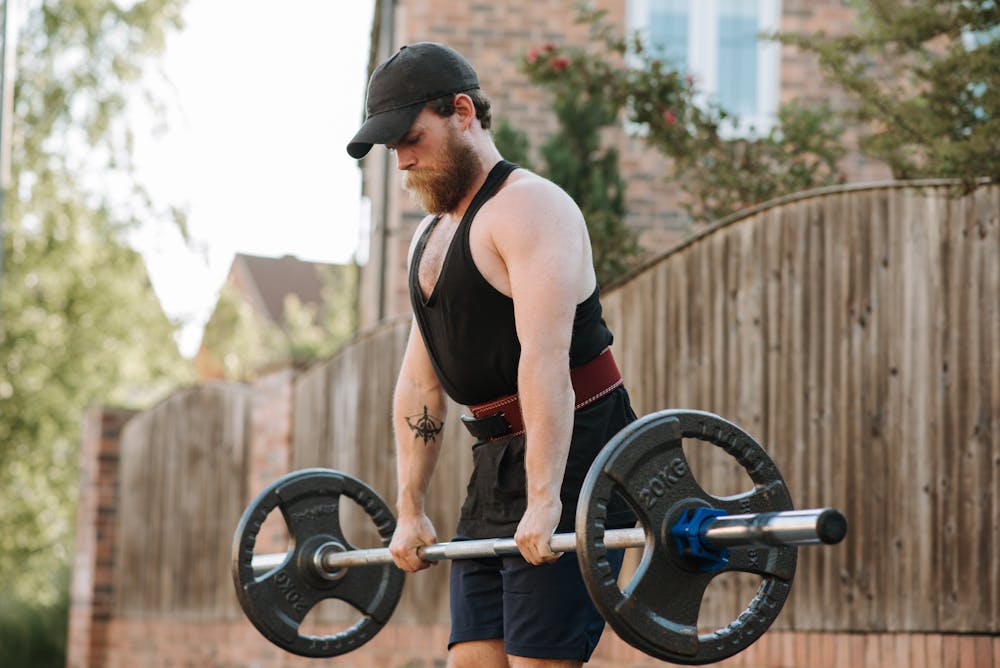As I delve deeper into my fitness journey, I’ve uncovered the remarkable world of suspension training—a versatile and effective method for building strength, stability, and flexibility using just straps and bodyweight resistance. Suspension training, also known as TRX training, has revolutionized the way I approach strength training, offering a dynamic and challenging workout that targets multiple muscle groups while improving core stability and balance.
 One of the most appealing aspects of suspension training is its simplicity and versatility. With just a set of straps and a sturdy anchor point, I can perform hundreds of exercises that target every major muscle group in the body. Whether I’m at home, in the gym, or outdoors, suspension training allows me to harness the power of gravity and leverage my own body weight to build strength and endurance in a functional and practical way.
One of the most appealing aspects of suspension training is its simplicity and versatility. With just a set of straps and a sturdy anchor point, I can perform hundreds of exercises that target every major muscle group in the body. Whether I’m at home, in the gym, or outdoors, suspension training allows me to harness the power of gravity and leverage my own body weight to build strength and endurance in a functional and practical way.
 Suspension training is particularly effective for improving core strength and stability—a key component of overall fitness and athleticism. By performing exercises such as plank variations, rows, and pikes on the suspension straps, I can engage the deep stabilizing muscles of the abdomen, lower back, and pelvis, helping to improve posture, prevent injury, and enhance athletic performance. The instability created by the suspension straps forces the core muscles to work harder to maintain balance and control, resulting in a more effective and efficient workout.
Suspension training is particularly effective for improving core strength and stability—a key component of overall fitness and athleticism. By performing exercises such as plank variations, rows, and pikes on the suspension straps, I can engage the deep stabilizing muscles of the abdomen, lower back, and pelvis, helping to improve posture, prevent injury, and enhance athletic performance. The instability created by the suspension straps forces the core muscles to work harder to maintain balance and control, resulting in a more effective and efficient workout.
 Moreover, suspension training is scalable and adaptable to all fitness levels and abilities. By simply adjusting the angle of the body or the position of the straps, I can increase or decrease the intensity of the exercises, making them suitable for beginners and advanced athletes alike. Whether I’m performing assisted squats, chest presses, or single-leg lunges, I can tailor my workout to match my current fitness level and goals, ensuring a challenging and effective training session every time.
Moreover, suspension training is scalable and adaptable to all fitness levels and abilities. By simply adjusting the angle of the body or the position of the straps, I can increase or decrease the intensity of the exercises, making them suitable for beginners and advanced athletes alike. Whether I’m performing assisted squats, chest presses, or single-leg lunges, I can tailor my workout to match my current fitness level and goals, ensuring a challenging and effective training session every time.
 But perhaps the most rewarding aspect of suspension training is its ability to improve functional strength and movement patterns that translate into everyday activities and sports performance. Suspension exercises mimic real-life movements and challenges, such as pushing, pulling, and stabilizing, making them highly transferable to activities of daily living and athletic pursuits. By training with suspension straps, I can improve my ability to perform daily tasks with ease and efficiency, while also enhancing my performance in sports and recreational activities.
But perhaps the most rewarding aspect of suspension training is its ability to improve functional strength and movement patterns that translate into everyday activities and sports performance. Suspension exercises mimic real-life movements and challenges, such as pushing, pulling, and stabilizing, making them highly transferable to activities of daily living and athletic pursuits. By training with suspension straps, I can improve my ability to perform daily tasks with ease and efficiency, while also enhancing my performance in sports and recreational activities.
 In addition to its physical benefits, suspension training also offers mental and emotional rewards. The dynamic and engaging nature of suspension exercises keeps me mentally focused and motivated throughout my workouts, providing a welcome break from the monotony of traditional strength training routines. With each rep and set, I feel a sense of empowerment and accomplishment, knowing that I am building strength, resilience, and confidence in myself and my abilities.
In addition to its physical benefits, suspension training also offers mental and emotional rewards. The dynamic and engaging nature of suspension exercises keeps me mentally focused and motivated throughout my workouts, providing a welcome break from the monotony of traditional strength training routines. With each rep and set, I feel a sense of empowerment and accomplishment, knowing that I am building strength, resilience, and confidence in myself and my abilities.
 In conclusion, suspension training is a highly effective and rewarding method for building strength, stability, and flexibility using straps and bodyweight resistance. With its simplicity, versatility, and scalability, suspension training offers a practical and sustainable approach to fitness that can benefit individuals of all ages and fitness levels. Whether I’m looking to improve core strength, enhance athletic performance, or simply stay active and healthy, suspension training provides a dynamic and engaging solution that delivers results.
In conclusion, suspension training is a highly effective and rewarding method for building strength, stability, and flexibility using straps and bodyweight resistance. With its simplicity, versatility, and scalability, suspension training offers a practical and sustainable approach to fitness that can benefit individuals of all ages and fitness levels. Whether I’m looking to improve core strength, enhance athletic performance, or simply stay active and healthy, suspension training provides a dynamic and engaging solution that delivers results.






